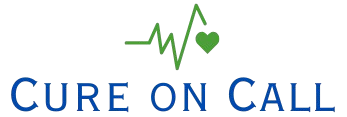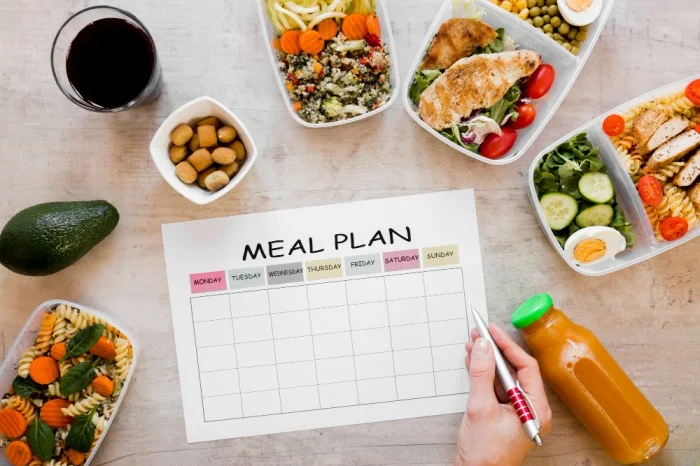Have you ever wondered why some people seem to eat endlessly yet still struggle to gain weight, while others can’t even look at a slice of cake without tipping the scale? The truth is, not every body runs on the same fuel demands. For athletes, bodybuilders, or individuals recovering from significant weight loss, a 4500 calorie diet plan isn’t indulgence—it’s necessity.
At Cure On Call, we’ve seen first-hand how nutrition transforms lives. One of our clients, an amateur powerlifter, struggled with fatigue during training until we recalibrated his intake to nearly 4500 calories. Within weeks, his energy levels soared, and recovery times shortened dramatically. This is not just about eating more—it’s about eating smarter.
Who Is the 4500 Calorie Diet For?
A 4500 calorie diet isn’t for everyone. In fact, if you live a sedentary lifestyle, such a plan could lead to unhealthy fat gain and metabolic stress. But there are specific groups who benefit:
- Athletes & Bodybuilders: Training twice a day demands extra energy and rapid recovery fuel.
- Hard Gainers (Ectomorphs): People with fast metabolisms who struggle to gain weight.
- Labour-Intensive Workers: Farmers, construction workers, and military personnel often burn thousands of calories daily.
- Individuals Recovering from Illness or Injury: High-calorie intake supports tissue repair and immune resilience.
📌 Expert Note: According to the British Journal of Sports Medicine, athletes in endurance sports often require 4000–6000 calories daily to sustain training intensity.
Core Principles of a 4500 Calorie Diet
Before we lay out the plan, let’s make this clear: eating 4500 calories doesn’t mean indulging in fast food all day. Quality matters as much as quantity.
- Balanced Macronutrients:
- Carbohydrates (55–60%): Your main energy source.
- Proteins (20–25%): Crucial for muscle repair and recovery.
- Fats (20–25%): Essential for hormones, joint health, and calorie density.
- Meal Frequency: 5–6 meals spaced every 2–3 hours keeps energy levels stable.
- Hydration & Micronutrients: Without vitamins, minerals, and adequate fluids, performance crashes.
4500 Calorie Diet Plan by Cure On Call
Here’s a practical plan that balances energy density with nutrition. Portions may vary depending on gender, metabolism, and training volume.
Meal 1 – Breakfast (900 calories)
- 5 scrambled eggs (3 whole + 2 whites)
- 2 cups of oatmeal cooked in whole milk
- 1 tablespoon natural peanut butter
- 1 banana
👉 Why it works: Protein from eggs, slow-digesting carbs from oats, and healthy fats from peanut butter provide a powerful start.
Meal 2 – Mid-Morning Snack (650 calories)
- Protein smoothie with:
- 2 scoops whey protein
- 2 tablespoons almond butter
- 1 cup frozen berries
- 1 tablespoon honey
- 1.5 cups oat milk
Meal 3 – Lunch (950 calories)
- 200g grilled chicken breast
- 2 cups brown rice
- 1 cup steamed broccoli
- 1 tablespoon olive oil drizzle
- 1 medium sweet potato
👉 Pro Tip: Swapping rice for quinoa occasionally boosts fibre and micronutrient intake.
Meal 4 – Pre-Workout Snack (500 calories)
- 2 slices whole-grain bread with natural almond butter
- 1 tablespoon jam
- 1 handful of walnuts
Meal 5 – Post-Workout (750 calories)
- Protein shake with:
- 2 scoops whey isolate
- 1 cup pineapple (fast carbs)
- 1 tablespoon flaxseed
- 2 rice cakes with hummus
Meal 6 – Dinner (950 calories)
- 200g salmon fillet
- 2 cups mashed potatoes with butter
- 1 cup green beans sautéed in olive oil
- 1 avocado (sliced)
Meal 7 – Before Bed (400 calories)
- 1 cup Greek yoghurt
- 1 scoop casein protein
- 1 tablespoon peanut butter
- A few slices of apple
Adjustments for Different Needs
- Vegetarians: Replace chicken with lentils, quinoa, or tofu; use tempeh and seitan for high-protein options.
- Vegan Athletes: Oat milk, pea protein, nut butters, and legumes can easily fill gaps.
- Busy Professionals: Prep meals in bulk on Sundays; overnight oats and pre-cooked grains save hours during the week.
👉 At Cure On Call, one of our nutritionists often says: “Your body doesn’t know convenience—it only knows nutrients.” Planning is half the battle.
Key Challenges & How to Overcome Them
- Digestive Strain: Eating 4500 calories can feel overwhelming. Use calorie-dense foods like nuts, avocados, and smoothies.
- Meal Fatigue: Rotate proteins and carbs to avoid boredom. For example, swap salmon for mackerel, rice for couscous.
- Budgeting: Buying in bulk, especially grains, oats, and frozen vegetables, reduces cost without reducing quality.
Evidence-Backed Benefits
- Muscle Growth: A study in Journal of the International Society of Sports Nutrition highlights that surplus calories paired with strength training maximise hypertrophy.
- Faster Recovery: High-calorie diets speed glycogen replenishment and muscle repair.
- Energy Consistency: Athletes report fewer mid-day crashes and better mental focus.
Common Mistakes to Avoid
- Relying on Junk Food: Yes, it’s easier to hit 4500 calories with pizza, but nutrient deficiencies will eventually hinder progress.
- Ignoring Sleep: Without rest, even the best diet can’t build muscle or repair tissues.
- Skipping Hydration: Dehydration slows metabolism and weakens performance.
FAQs on the 4500 Calorie Diet
1. Will I gain fat on a 4500 calorie diet?
If you’re not training hard or expending high energy daily, excess calories will turn into fat. Athletes and heavy labour workers are the main candidates.
2. Can women follow this plan?
Yes, but calorie needs differ by body weight, activity, and goals. A female endurance athlete may need 3500–4500 calories, while a sedentary person wouldn’t.
3. Is it safe long-term?
If balanced properly with whole foods and monitored by a nutritionist, it can be safe and effective. Periodic check-ins on blood sugar and cholesterol are recommended.
4. Can I bulk on fewer calories?
Yes, many lifters bulk effectively on 3000–3500 calories. 4500 is for extreme training or fast metabolisms.
Final Thoughts – Is a 4500 Calorie Diet Right for You?
A 4500 calorie diet is not a casual experiment—it’s a structured commitment for those with exceptionally high energy needs. Done right, it fuels performance, builds muscle, and speeds recovery. Done wrong, it can lead to weight gain, sluggishness, or nutrient imbalances.
At Cure On Call, we encourage tailoring this plan to your own metabolism, activity level, and lifestyle. Think of it as fuelling a high-performance engine—premium fuel leads to premium results.
👉 Have you ever tried a high-calorie diet? What challenges did you face—meal prep, appetite, or consistency? Share your experiences below; your story might inspire someone else on their journey.
Read Also: Will the Cabbage Soup Diet make you defecate? An Honest, Expert-Led Look




